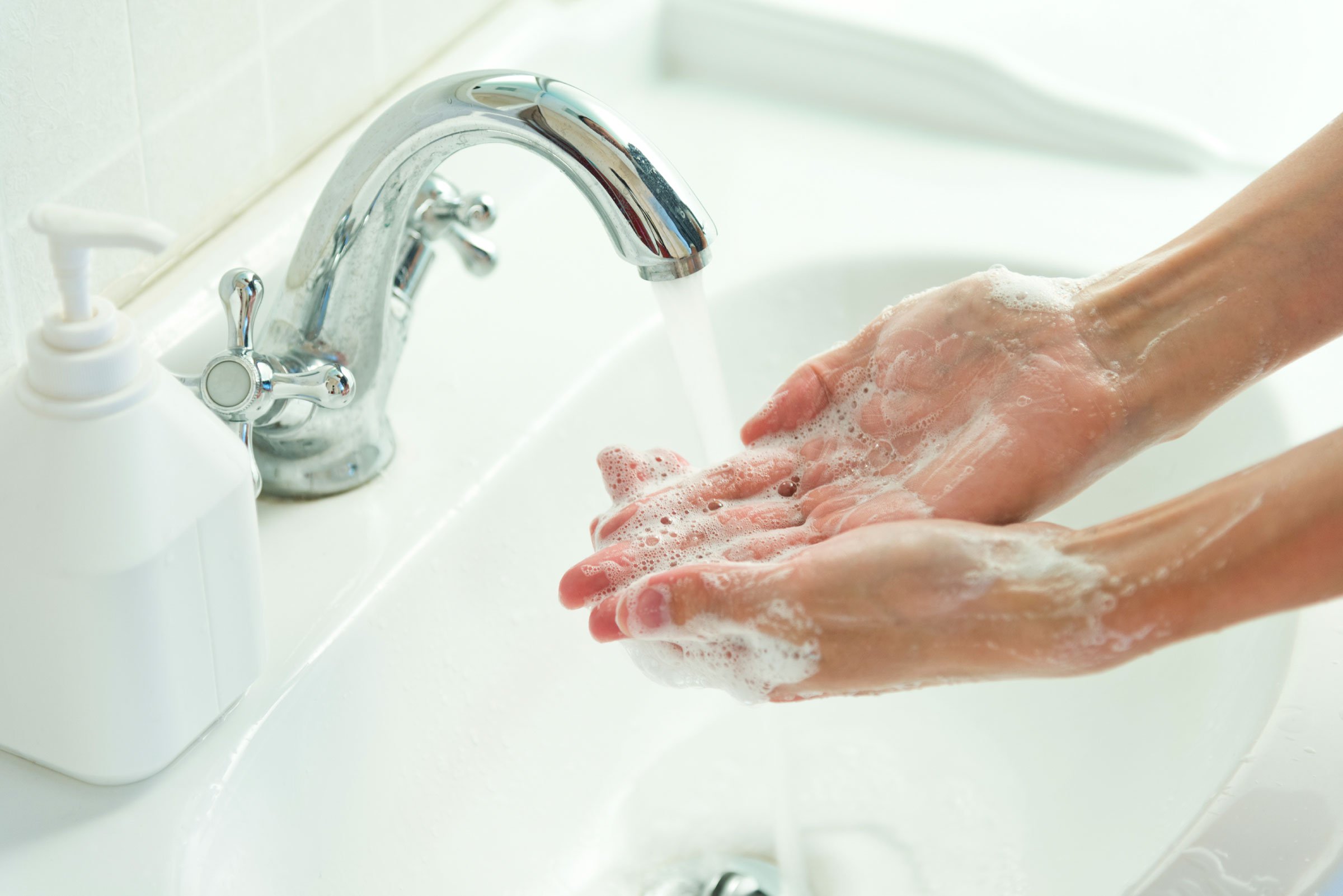Improper handwashing can leave you susceptible to germs. Make sure you’re not making common hand-washing mistakes.
You Don’t Wash Long Enough
A recent Michigan State University study found that 95 percent of people don’t wash hands long enough to effectively kill germs—that’s 20 seconds of scrubbing with soap and water, according to the Centers for Disease Control and Prevention. “We tell kids and adults to sing the ‘Happy Birthday’ song twice,” says Roshini Raj, MD, attending physician at NYU Medical Center. The average hand-washing time was only about six seconds, the MSU study found. What’s more, 15 percent of men and 7 percent of women didn’t wash their hands at all after using the restroom.
You Skip Nooks and Crannies

If you just rub soap between your palms, rinse, and call it a day, your hands are probably still dirty. “Germs love to hide under fingernails and in the pockets between fingers, so you should scrub these areas every time you wash,” says Dr. Raj. Be sure to scrub vigorously to work up a good lather—friction is key to eliminate dirt, grease, and microbes from the skin.
You Don’t Dry Thoroughly

The most diligent handwashing techniques are worthless if you skimp on drying. Germs love to breed in moisture, says Dr. Raj. Leaving the restroom with still-damp hands can make it easier to pick up germy microbes from the next surface you touch. If you have the choice of paper towels or air blowers, choose the paper towels. In a study published in the journal Mayo Clinic Proceedings in 2012, researchers analyzed all hand washing studies done since 1970. The paper concluded that paper towels are superior to driers at getting hands properly dry without spattering germs or drying out skin. If blowers are your only option, be sure to spend enough time with your hands under the blowing air until they’re completely dry, even if it takes a while.
You Wash Only After Using The Bathroom

Anytime you touch a public surface—elevator buttons, a doorknob, the ATM, or a subway pole—you’re at risk for picking up germs or bacteria. “Most people know to wash after going to the bathroom, but you should wash periodically throughout the entire day, especially during cold and flu season,” says Dr. Raj.
For times when it’s not convenient to get to a sink, stash a bottle of hand sanitizer in your bag or desk drawer. A sanitizer with alcohol content of at least 60 percent is effective at killing many types of germs, says the CDC.
You Assume You Have To Use Hot Water

Soap and hot water is one tip from Mom you can safely ignore. Dr. Raj says that despite widespread belief that you need hot water to kill hand germs, lukewarm or even cold water will do the job just as well. (In fact, they’re actually better for your skin because they’re less drying). A recent study by researchers at Vanderbilt University in Tennessee found that cold water reduced levels of bacteria just as well as hot water, as long as hands were scrubbed, rinsed, and dried properly. Researchers noted that while heat has been proven to kill bacteria, you’d need to use boiling water at a temp of about 212 degrees Fahrenheit to see a significantly greater reduction in pathogens.












